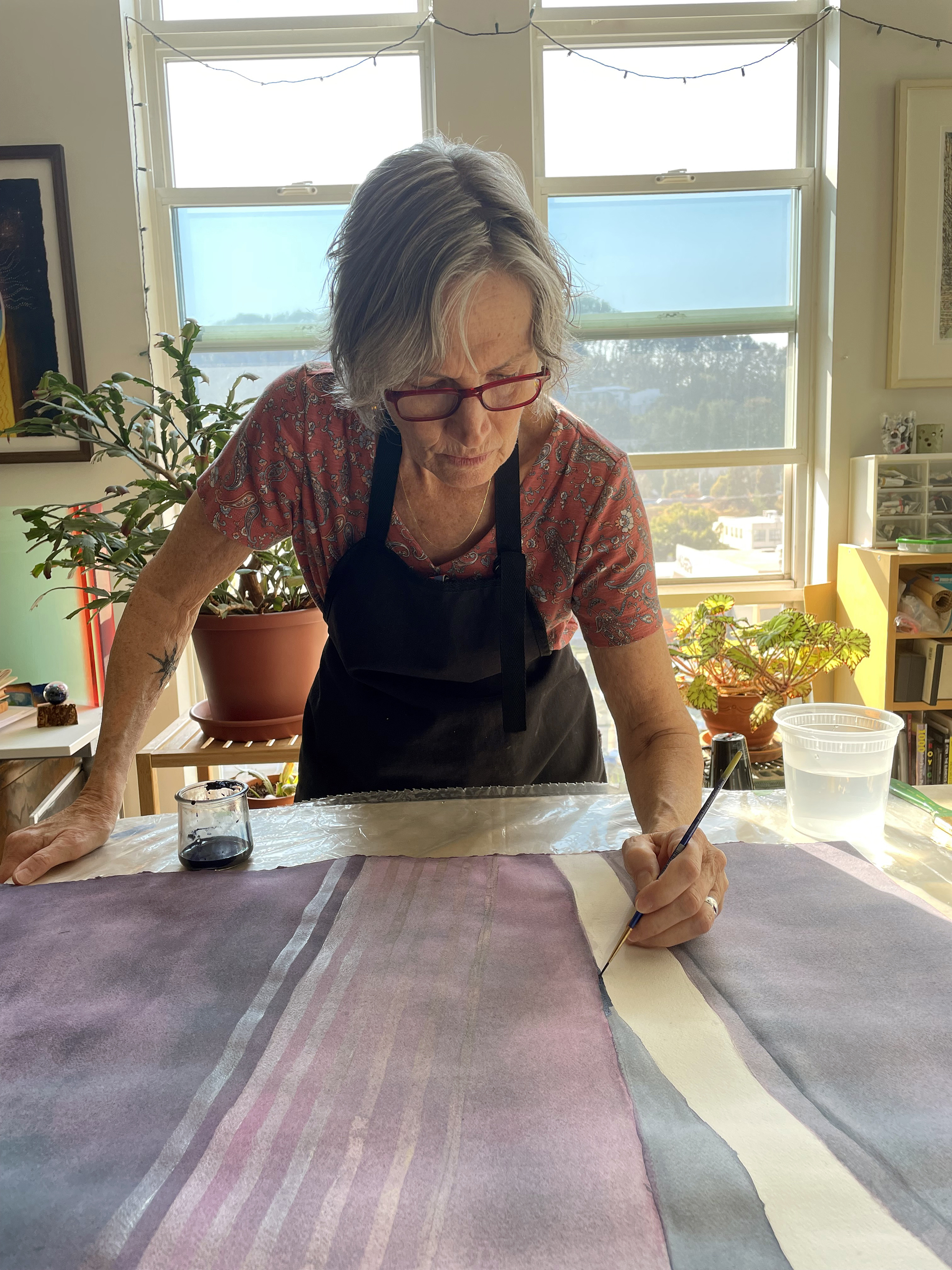Exploring the Abstract Landscape
Linda James
$730
In this 10-week class, we will focus on various techniques to abstract a landscape. Using examples from a different artist each week, we will explore the methods they use to create abstraction in their landscape paintings. We will work from photos as well as our imagination. The goal is to capture the feeling of a place – how it impacts you personally. All demos will be done with watercolor, but students can participate with any watermedia. Classes are supplemented with slide presentations, demo recordings, handouts, and group critiques of work done in and out of class.
Required Supplies
ONLINE SUPPLY LIST
• Professional grade paints (I will be using watercolor and gouache).
I am not requiring a specific color palette. I want you to have a good range of color - think of colors you would find in nature.
• Brushes. I recommend mixed synthetic/natural hair brushes, but there are good synthetic brushes available and they tend to be more affordable. Have a variety of sizes – for example, a #8 round, a #3 or #4 round, a 3/4” flat and a 1-1/2 or 2” wash.
• Two 22” x 30” sheets of 140# professional cold press (or hot press, your preference) watercolor paper (Substitute canvas or other substrates for your medium).
* One 22” x 30” sheet of 300# cold press (or hot press) watercolor paper (same choices as above)
• 15” or 18” metal ruler and x-acto knife for cutting 300# paper
• Painting or drawing board (large enough to hold an 11” x 15” sheet of paper – you can work larger than this, but we will mostly be working on ¼ sheets)
• A roll of ¾” or 1” artist’s or painter’s tape (Blick painter’s tape or Nichiban 210 paper tape)
• A white plastic 18-well (or larger) palette. Porcelain is best, but pricey. Porcelain saucers are also great to have.
• A plastic spray bottle (I recommend Flairosol Spray bottles for misting and those little plastic spray bottles for most other effects)
• 3 water containers and paper towels
• Pencil and eraser
• Tracing paper – 11” x 14” pad or larger
• masking fluid (watercolor or acrylic)
• Scraps of watercolor paper (backs of discarded paintings)
• various items for creating textures – sea sponges, salt, plastic wrap, candle wax, etc.
• A hair dryer
Adjust supplies to match your medium.
If you have any questions, email me at lindajamesart@gmail.com







